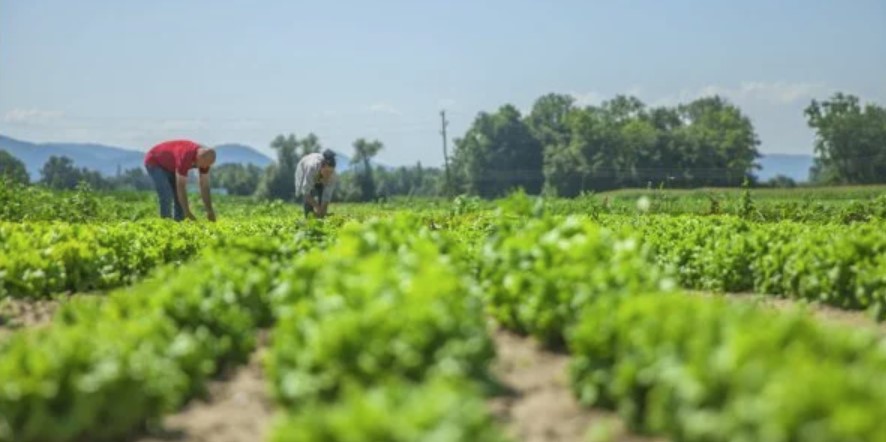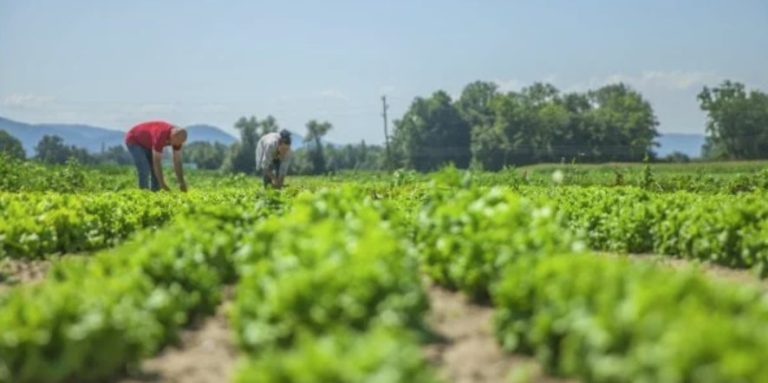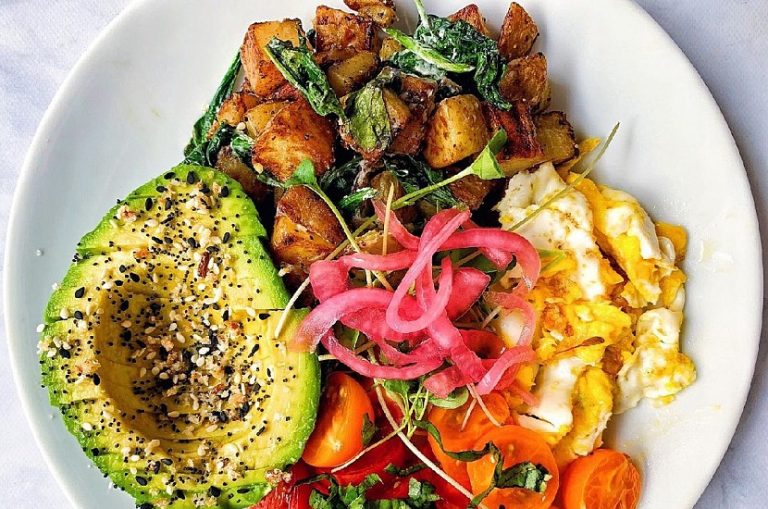Everyone is talking about climate protection. Farmers and forest owners are complaining about major losses as a result of changing climatic conditions, which are reflected in violent storms and unusually long dry periods in this country. The agricultural partner companies of meine ernte are also feeling the consequences and, like Bauer Bachhausen from Solingen in 2018 and 2019, have to accept heavy losses in the cultivation of cereals, vegetables or strawberries. Anyone who grows their food in their own garden or on the balcony without using pesticides is acting sustainably in many respects and is therefore making an important contribution to climate protection.
Seasonal and regional – your own garden as the basis for climate protection

Growing your own fruit and vegetables is not only healthy, but also quickly brings about a new appreciation for food. You get a feeling for when which crops are “in season” or when they have to be grown or imported under energy-intensive conditions. Tomatoes in December, for example, tend to seem “Spanish” to a vegetable gardener and are not exactly one of the climate-friendly meals on the plate in winter due to long transport routes and high water consumption. On the other hand, by growing your own crops in the kitchen garden and being more conscious of consumer behavior, energy and long transport routes can be saved.
With your vegetable garden or balcony you create the perfect conditions for gardening close to nature and doing your part to protect the environment.
But there are a few tips on how you can garden even more sustainably in your vegetable paradise!
Work the soil close to nature
The most valuable resource in your vegetable garden is the soil. In the best case, the soil always contains the right amount and concentration of nutrients. Since we remove nutrients through our vegetable harvest, additional care and protection of the soil is essential. Useful soil organisms are promoted through near-natural care. In addition, nutrient-rich soil strengthens your vegetable plants and makes them less susceptible to disease.
Our top 5 tips for a nutrient-rich soil in the vegetable garden:
1. Use organic fertilizer: A soil used for gardening and agriculture should be fertilized. We recommend the use of organic fertilizer. These are products of animal and/or vegetable origin that decompose slowly and add value to the garden soil.
2. Conserve water by hoeing: During the gardening season, you should regularly hoe your soil around the vegetable plants. This keeps the soil permanently loose and well aerated. A loose garden soil can absorb rainwater and irrigation water better. Chopping also removes weeds. You can simply let them dry out on the bed when the sun is shining.
3. Composting is about studying: Make your own nutrient-rich soil with your garden waste. With a compost heap in the garden, you can use the remaining nutrients from plant residues and return them to the earth as finished compost. Tip: There are also small composters for the balcony!
4. Mulch soil: Protect your garden soil from erosion. Soil erosion is the removal of the topsoil, the fertile soil for your vegetable cultivation. Protection is provided by a layer of mulch made of green waste and plant residues. Mulch is particularly important in winter so that your cleared vegetable beds are not exposed to wind and weather.
5. Buy peat-free soil: If you buy soil for your vegetable patch, raised bed, or balcony plants, then make sure that it is as peat-free as possible.
This is how you save water in the vegetable garden
To get a feeling for the water needs of your plants, you should consider the length of the roots and the water content of the vegetables.
In general, outdoor plants form longer roots and require less additional irrigation water than raised bed or balcony plants. Plants that need a lot of water are, for example, tomatoes, cucumbers, strawberries, lettuce and aubergines.
Hacking – the solution to save a lot of water
A loose and regularly chopped soil saves additional watering, since the existing water reservoirs can be more easily reached by the roots of your plants.
Likewise, a layer of mulch on your vegetable patch keeps moisture in the soil and protects against superficial drying out. Incidentally, there are gardeners who do without watering the entire year because they always hoe as soon as it has rained, so that the soil stores enough water.
That’s how you water properly
If you still need to water extra, stick to the following points:
Use collected rainwater and water the roots of the plant vigorously once instead of just watering a little several times a week. This will encourage root growth in your vegetable plants and train them to search for water on their own.
You should water in the early morning hours or late afternoon/evening if possible, since the plants can absorb the water best at these times.
Some vegetables, such as cucumber, require regular watering and will produce few or bitter fruits without it. Here you can think about an automatic watering system like drip irrigation.
Beneficial – the natural alternative to pesticides
No one wants pesticide residues in their vegetables or soil. So-called “beneficial insects” can prevent the use of pesticides and plant protection products in your vegetable garden. The ideal protection for your plants is to encourage beneficial insects in your garden and to garden in an insect-friendly manner. In this way, pests and diseases on the vegetable plants do not increase. Beneficial insects ensure a balanced soil life and have the larvae and eggs of pests as a food source.
Attract wild bees and insects with a variety of flower mixes. You can upgrade empty beds in autumn with green manure. This serves as a source of food and supports the nutrient requirements of the soil. Edible flowers and herbs are a good opportunity to do something good for the insects and yourself.
Make sure there are enough places in your garden for insects and microorganisms to retreat to with leaves, piles of dead wood and stones, as well as nesting boxes for songbirds. Especially in winter, the animals are happy to accept this shelter. You should also leave dried stems of e.g. chives over the winter and only cut them off in summer.
No plastic in the vegetable garden

Small plastic particles are just as undesirable in your vegetable patch as they are in the oceans. Nevertheless, nets and fleece are often essential to protect the plants. Here it is worth buying a long-lasting crop protection net that does not fall apart and can be used for many years. Fix it with stones or bury it well in the ground – this way you avoid plastic net holders.
There are also alternatives made from compostable materials such as organic cotton or grain-based.
Plant pots, especially for growing young plants in spring, are also available made from coconut fibers or you can make your own growing pots from newspaper or toilet paper rolls.
When it comes to gardening tools, it is also better to spend a little more money and then have something of it for a long time: You really need these gardening tools. Large garden tools that are used less often can be shared with your neighbors.







